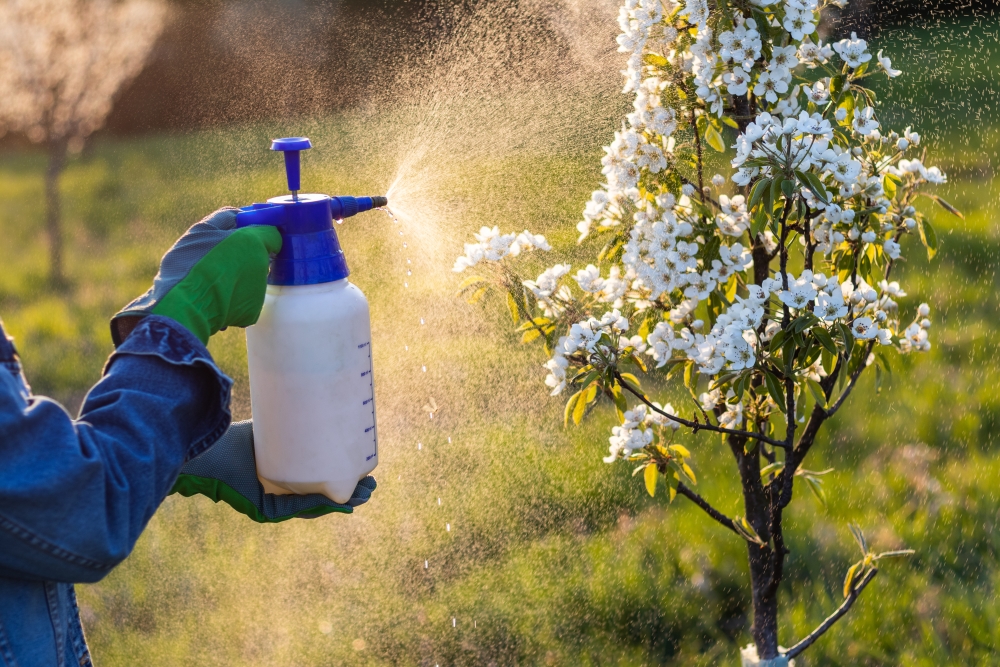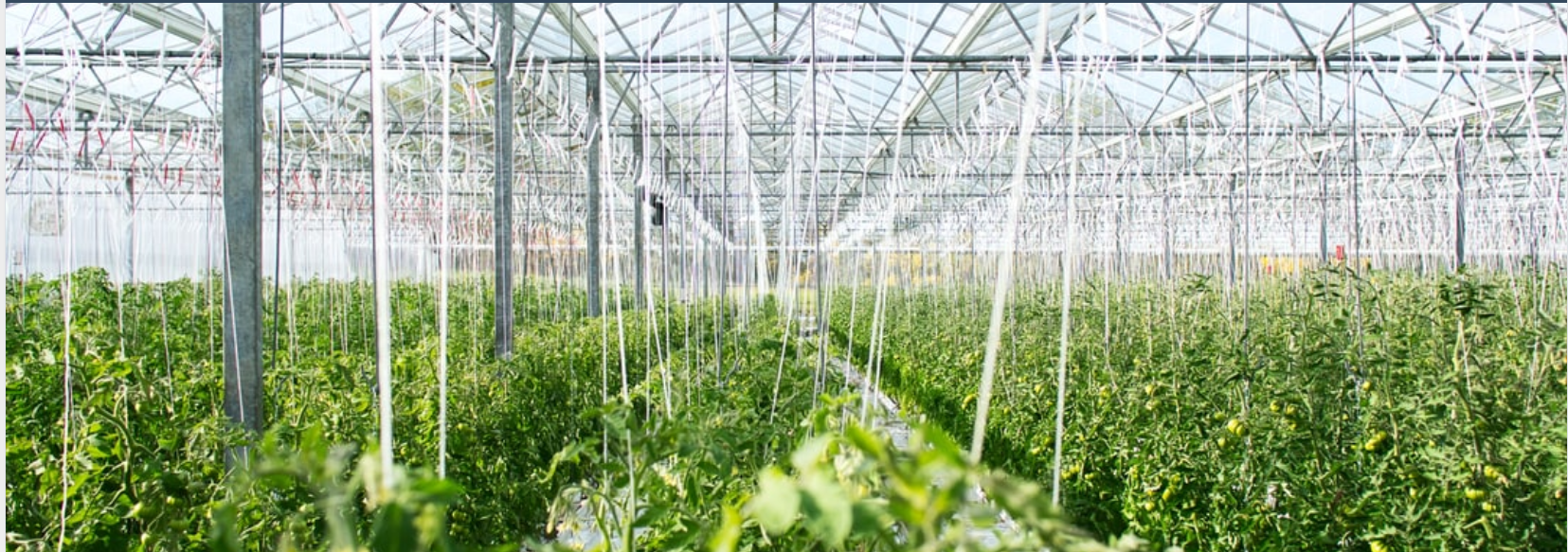There are a wide range of organic alternatives to chemical pesticides:
Are you looking for alternatives to chemical pesticides to protect your farm or garden from chemical contamination? You’re not alone. As the organic-only food purchasing movement grows rapidly and farmers and gardeners grow increasingly concerned about being exposed to chemicals, many are looking for a new solution. Luckily there are many alternatives to using pesticides available and many innovators bringing alternatives to chemical pesticides to market every year.
These substitutes for pesticides or organic alternatives to pesticides fall into a few main categories. Organic pesticides have always been available, and as the popularity of organic food grows more and more are coming to market. Integrated pest management best practices, or IPM, a system of best practices followed by farmworkers is experiencing rapid adoption to prevent pest access to grow environments before they become a problem, and to identify infestations quickly, all in an effort to reduce pesticide usage. Another very popular category of substitutes for pesticides is the biological approach. Biological alternatives to chemical pesticides include vast numbers of predatory insect species which are acquired by the grower and released on pest hot spots where they will predate pest insects. Read more about supporting biological alternatives to chemical pesticides here.
The final alternative to chemical pesticides available is the cutting-edge innovation of pesticidal light treatments. The IntraLight proprietary pesticidal light treatment system treats pests as well as pathogens, unlike several of the alternatives to chemical pesticides which may only treat pests and cannot target pathogens. The IntraLight system also acts not only as an alternative to chemical pesticides but a substitute for other crop protection systems entirely, allowing for organic production and indeed beyond organic production, allowing the marketing of produce with zero residues of any kind.
Biological Controls
As already mentioned, the biological control approach is a system where highly trained scouts explore the grow environment regularly, they monitor crops closely for any signs of possible pest infestations. When a hot spot is identified the location is tagged and recorded, and the type or types of insects present are identified. Once identified a trained and knowledgeable biological control expert can determine an applicable predatory insect species. This species is acquired and deployed at the tagged infestation site and any other sites where the pests may have spread.

Commonly used beneficial biological control species vary based on crop species and pest species. Common species used include ladybugs, various types of predatory mites, minute pirate bugs, and even large predators like praying mantis.
These beneficial biological controls must be deployed in an area where they can survive, consume the target pests, and ideally begin to reproduce and establish a stable population until they eradicate the pest infestation. In order to survive the temperature range, humidity range, and egg-laying habitats specific to the beneficial biologic species must be maintained. Additionally, if systemic pesticides have previously been applied they will propagate through pests consuming plant tissue, and into the beneficial biologic species as they consume contaminated pests, this will render them ineffective. Along with no systemic pesticides being present, most pesticide use must be curtailed entirely as pesticide sprays or fogs are broad in the range of insects they damage. This means that full faith must be put in biological controls, which can be devastating if their population cannot take hold, or they are ineffective. The IntraLight pesticidal light treatment system can still be used alongside most beneficial biological control species, specifically those with hard chitinous exoskeletons.
Organic alternatives to pesticides
From essential oil mixes such as neem oil among many others, to plant tissue surface PH adjustments, insecticidal soaps, and plant extracts like pyrethrin along with a myriad of other organic pesticides have always been available to farmers as alternatives to traditional non-organic chemical pesticides. While these solutions still leave a residue on produce, the general view of the public is that the organic pesticide residue is non-harmful or less harmful than traditional non-organic pesticides. This alternative does however come with several drawbacks.
These solutions are typically non-systemic therefore requiring more applications in order to consistently treat pests and pathogens by applying the pesticides directly to insects or fungal infections. Systemic non-organic chemical pesticides propagate within plant tissues, remaining there and effectively fighting any pests consuming plant tissues even long after the initial application. While this has been seen as a benefit of non-organic pesticides, it also leads to residues which cannot be washed off during harvesting or by the consumer, but permanently contaminate the plant and the environment in general.
The higher application rates and more consistent applications required by organic pesticides, combined with the higher purchase rates and higher cost of organic pesticides is still an acceptable price to pay by many gardeners and farmers. Either to increase the value and marketability of their produce to keep up with growing organic food purchasing trends, to stay ahead of governmental regulation and chemical bans, or to protect themselves, their workers and consumers, and their local environment from pesticide contamination. However, here at IntraLight, we believe there are better solutions, more cost-effective while still being alternatives to chemical pesticides and indeed allowing for production of beyond organic, no-touch organic produce, with no residue, organic or non-organic, whatsoever. This recommended approach is to utilize IPM best practices and the cutting-edge innovation of IntraLight pesticidal light treatments.
IPM Best Practices as a Substitute for Pesticides
Integrated Pest Management can be an extremely effective substitute for pesticides when best practices are applied and rigorously followed by all workers. This system can dramatically reduce the usage of chemical pesticides and other crop protection methods, allowing for much cleaner produce and effective environmental stewardship. IPM best practices are most effective in Controlled Environment Agriculture (CEA) where the growing environment can be effectively sealed and inbound access routes for pests and pathogens can be controlled. These CEA locations should be sealed physically and maintained consistently. Air intakes and outtakes should be properly sealed with spore filtering HEPA filters at a minimum.
A large benefit of setting up an effective IPM system for any grow environment, and the reason that every farmer and gardener should utilize an IPM system and follow it closely is the ability to include within the system any of the other alternatives to chemical pesticides, or even chemical pesticides themselves. This allows for IPM as a substitute for pesticides but also for IPM as a synergistic system which includes other crop protection systems.
Another effective way for IPM best practices to act as a substitute for pesticides are direct traps like sticky traps or diatomaceous earth around plant stems, preventing non-flying insects from reaching the canopy. Additionally, a crucial piece of IPM is control of the superhighways pests mainly use to enter the grow environment, you, and your workers. Workers, especially those with pets at home, can easily bring into the environment insects, spores, bacteria, and other pests and pathogens on their clothes, their skin, and the soles of their shoes. Mandatory coveralls, clean clothes specifically used in the grow environment, shoe covers, or shoe sterilization upon entry can reduce pest flow into the environment, reducing your usage of chemical pesticides or alternatives to chemical pesticides.
Cutting Edge Light Treatment Systems for Crop Protection
The IntraLight pesticidal light treatment system is the final alternative to chemical pesticides we will discuss here. The IntraLight pesticidal light treatment system is an array of light treatment units. Each unit regularly applies a burst of wide spectrum pesticidal lighting every 24 hours, targeting a broad array of pests and pathogens. Utilizing LED technology combined with short bursts of pesticidal light treatments 24 hours apart, the IntraLight units achieve a lifespan of many years.

This long lifespan of the IntraLight solution, combined with the single upfront cost and one-time installation of the IntraLight system makes it by far the most cost-effective alternative to chemical pesticides. This system removes consistent costs associated with other crop protection alternatives. No consistent purchasing of organic pesticides or biological controls is required. No continued labor expenses for pesticide application, scouting and biologics selection/application are required.
With one upfront purchase of an IntraLight pesticidal light treatment system and a single installation, the system will automatically protect your crops from pests and pathogens, remove significant crop protection expenses, and drastically increase the value and marketability of produce as an alternative to chemical pesticides that is not only an organic but a beyond organic, no-touch, zero residue solution. Pre-order now and stay ahead of the competition.

